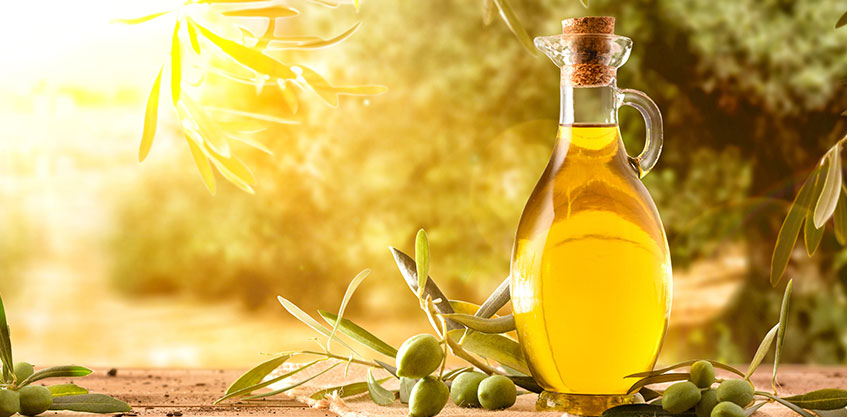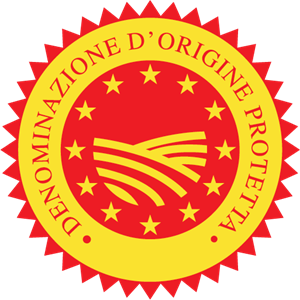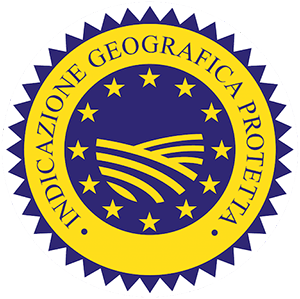Extra virgin olive oil is the king of oils, precisely because it is the best quality. Free from defects from an organoleptic point of view, it is extracted strictly with mechanical means (without chemical treatment).
The quality that distinguishes it is the synthesis of the organoleptic sensations (fruity, bitter and spicy) and of the main chemical parameters that express its nutritional value, making it the first condiment of the Mediterranean diet due to its beneficial properties for health, thanks to the balanced intake of antioxidants, vitamins and minerals.
The "physical" attributes of this long life elixir, technically known as the
minimum quality standards that
extra virgin olive oil must meet in order to be marketed as such, are established by the European Union through EEC Regulation no. 2568/91.
There are three primary attributes to consider:
- acidity, which affects the state of degradation of the oil and which must not exceed 0.8%;
- the number of polyphenols (over 200 mg / kg), a highly varied family of natural antioxidants that help to give the oil stability over time (i.e. slow down the rancidity process), nutritional quality, health functions and sensory peculiarities. Among the components of the chemical class of polyphenols, hydrophilic phenols are almost exclusive to extra virgin olive oil. Scientific studies have shown the important effect on health especially of the subfamily of secoridoids which have antithrombotic properties, inhibiting the coagulation of bad cholesterol - LDL, anticancer and anti-inflammatory;
- peroxides are an oxidative alteration that indicates a state of degradation and aging. For this reason, the European regulation sets the limit on the number of peroxides in an extra virgin olive oil at 20.
Its color, which can range between
straw yellow or deep green, does not affect the quality of extra virgin olive oil. The bright golden yellow indicates that the extra virgin olive oil was obtained from pressing of perfectly ripe olives; the green indicates that the oil comes from unripe olives.
The protection mark is a guarantee of the quality of extra virgin olive oil. The EEC regulation 2081/92, modified by regulation 1151/2012, introduced the Protected Designation of Origin (PDO), according to which extra virgin olive oil must respond to qualitative characteristics linked to the territory of origin of the crops and must be traced back to the same geographical area where the production process took place.
PDO products are marked with this label, whose predominant colors are red and yellow, as established by the Commission Regulation EC No. 628/2008.
Protected Geographical Indication (PGI), on the other hand, refers to the place where the production process takes place. To obtain an PGI mark it is necessary to develop at least one phase of the production process in the indicated location, respecting the strict rules required and controlled by independent control bodies. (era già tradotta nella prima versione)
This is the label for PGI branded products, whose predominant colors are yellow and blue, as established by the Commission Regulation EC No.628 / 2008.
In 2010, the label for organically produced products was introduced and became mandatory in 2012.
The organic label can only be used on products that have been certified as organic by an authorized inspection body or agency. This means that they have met strict conditions for production, handling, transportation and storage. The logo can only be used on products that contain at least 95% organic ingredients and the remaining 5% also needs to comply with strict supply-chain conditions. Furthermore, to obtain the organic label, the same ingredient cannot be present in organic and non-organic form. This requirement applies to all pre-packaged foods produced in Europe and remains optional for those in bulk and imported.
 The logo depicts twelve white stars, one of them a comet representing a stem, that create the shape of a leaf on a green background. Next to the EU organic logo, there is a code number of the control body and the actual origin of the ingredients (Italy / EU / non-EU). When Italy (or Spain or France, etc.) are indicated next to the logo, it means that 100% of the ingredients have grown on national territory.
The logo depicts twelve white stars, one of them a comet representing a stem, that create the shape of a leaf on a green background. Next to the EU organic logo, there is a code number of the control body and the actual origin of the ingredients (Italy / EU / non-EU). When Italy (or Spain or France, etc.) are indicated next to the logo, it means that 100% of the ingredients have grown on national territory.
Therefore, be wary of a tasteless, colorless and odorless extra virgin olive oil. Extra virgin olive oil gives fragrant aromas and recalls the scent and taste of a healthy, freshly picked fruit at the optimal point of ripeness. (già tradotto in prima versione)
The taste and tactile qualities of a good extra virgin are:
- the bitterness, typical flavour associated with oils made from green olives. The bitterness, caused by the richness in polyphenols of the product, can vary but it is a sign of high-quality olive oil.
- the spiciness, a tingling feel with pungent notes of varying intensity perceived in the mouth and throat.
- The astringent, tactile sensation of intense and pleasant dryness that fills the mouth and stimulates the surface of the tongue and the palate;
- The sweetness, a sensation typical of extra virgin olive oil that is made with ripe olives and therefore lacks the bitterness or spiciness of green olives. It is typical of some cultivars (Taggiasca and Grignan).
The aromatic qualities
In addition to the typical fruity taste, there is a multitude of aromas and positive olfactory sensations that can be found in extra virgin olive oil. The International Oleic Council has created a list of such aromas: unripe, citrus, chamomile, artichoke, grass, aromatic herbs, eucalyptus, flowers, fig leaf, olive leaf, exotic fruit, ripe fruit, green fruit, red fruit, almond, apple, walnut, green pepper, bell pepper, pear, pine nut, tomato (leaf), vanilla.
The negative attributes
Extra virgin olive oil must not have any defects.
If the olive oil does present some defects, mainly caused during the production process, specifically the olive preparation phase, the classification of extra virgin olive oil cannot be used.
The main negative attributes are:
- mold, rancid and sludge. They may be due to poor conservation of the olives and exposure to oxygen or residues/sediments during processing;
- heating. Characteristic of an oil obtained from olives that have undergone a certain degree of fermentation remained stacked for a long time and stored in poor conditions;
- winy - vinegary. The aftertaste of wine or vinegar that some oil present is due to poor storage conditions of olives or by fermentation of the oil itself.
- metallic. The bad taste of olive oil caused by contact with metal surfaces during crushing, kneading, pressure or storage;
- frozen olives. The scent of damp wood is typical of frozen olives







 The logo depicts twelve white stars, one of them a comet representing a stem, that create the shape of a leaf on a green background. Next to the EU organic logo, there is a code number of the control body and the actual origin of the ingredients (Italy / EU / non-EU). When Italy (or Spain or France, etc.) are indicated next to the logo, it means that 100% of the ingredients have grown on national territory.
The logo depicts twelve white stars, one of them a comet representing a stem, that create the shape of a leaf on a green background. Next to the EU organic logo, there is a code number of the control body and the actual origin of the ingredients (Italy / EU / non-EU). When Italy (or Spain or France, etc.) are indicated next to the logo, it means that 100% of the ingredients have grown on national territory.
